
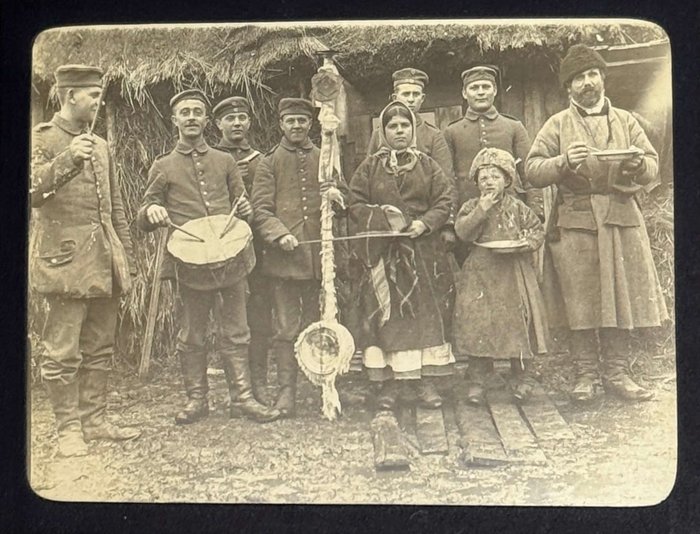
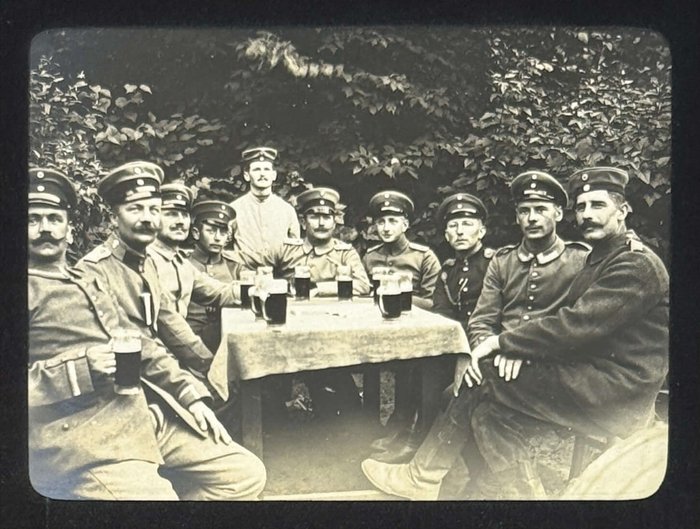
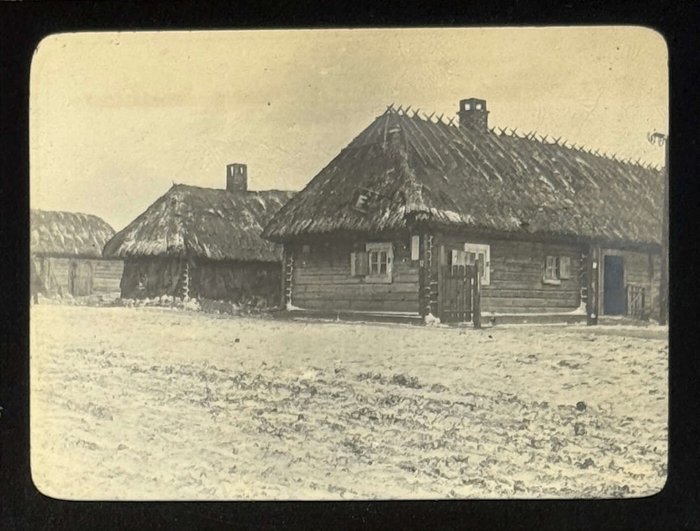
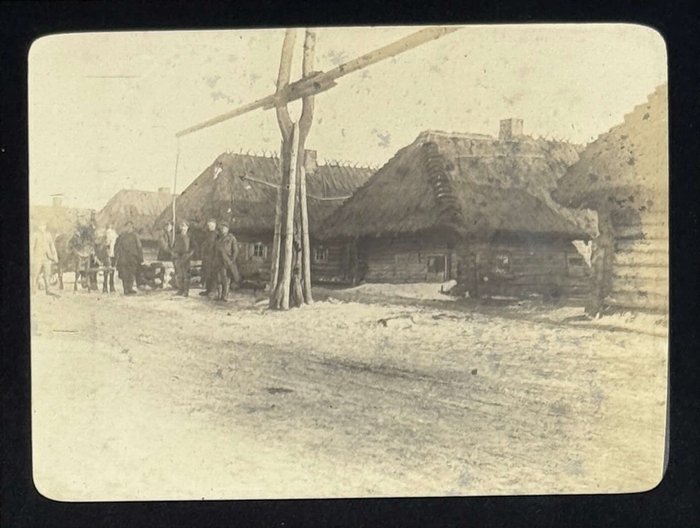
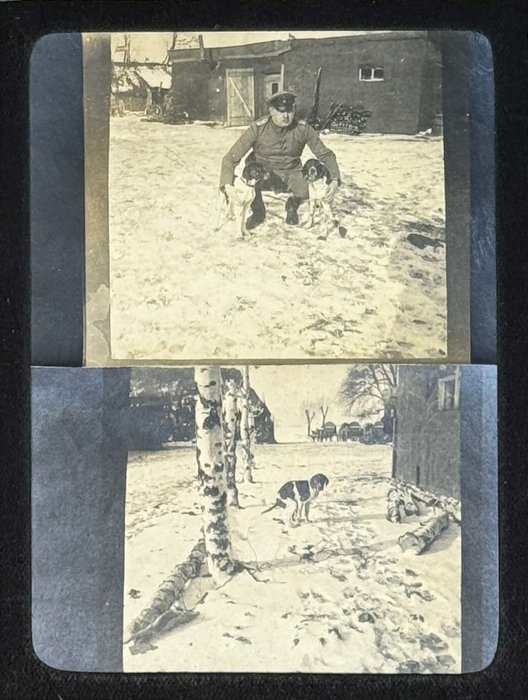
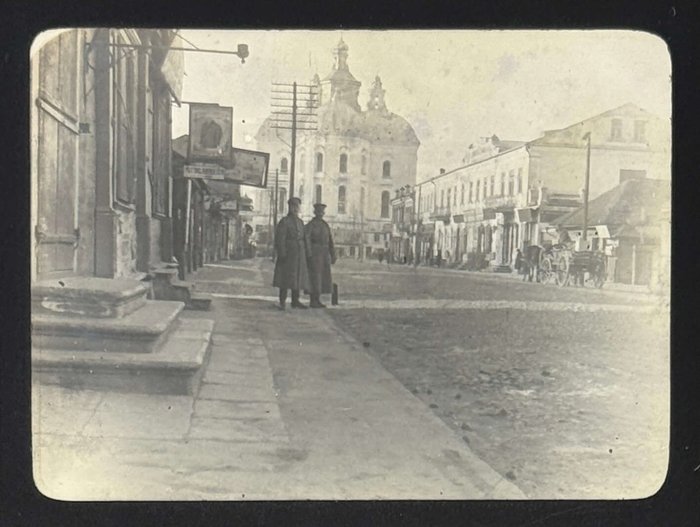
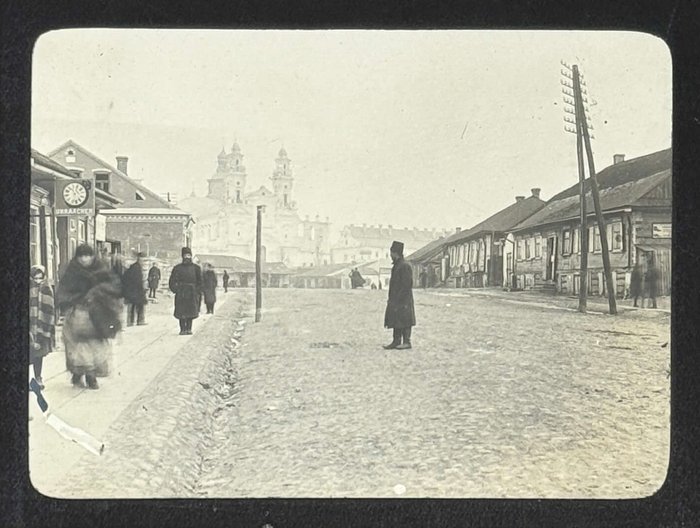
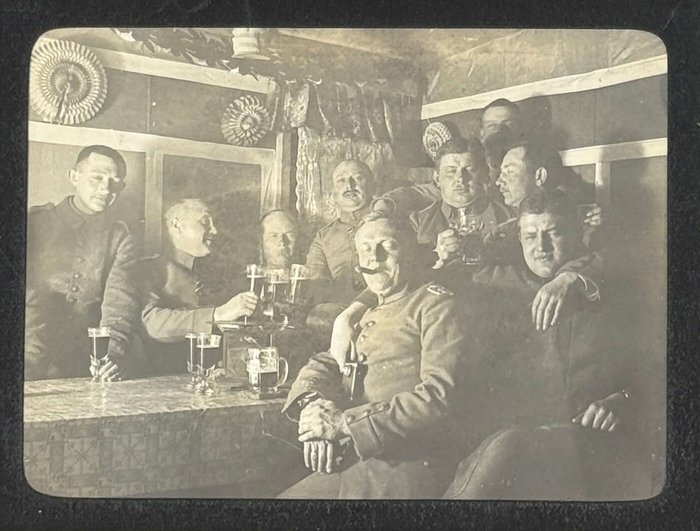
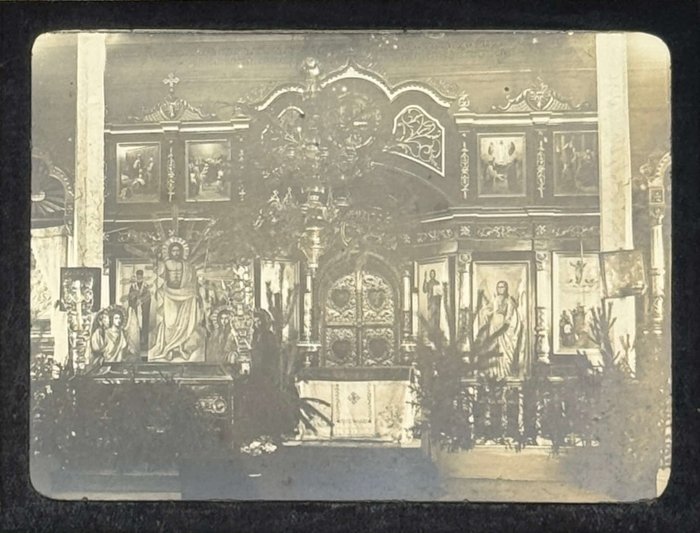
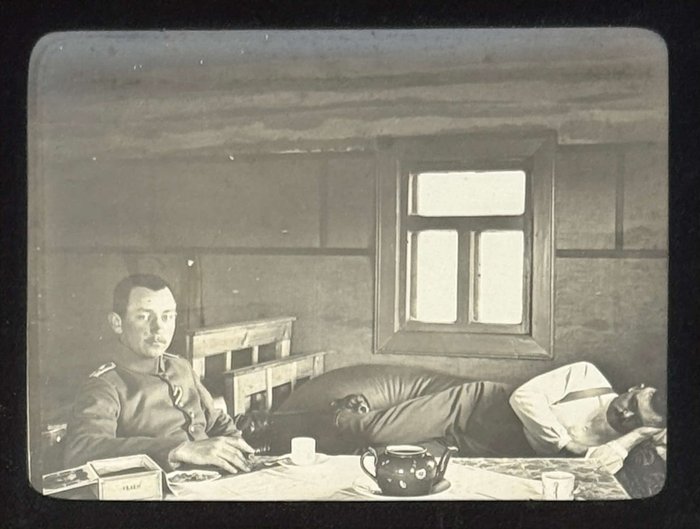
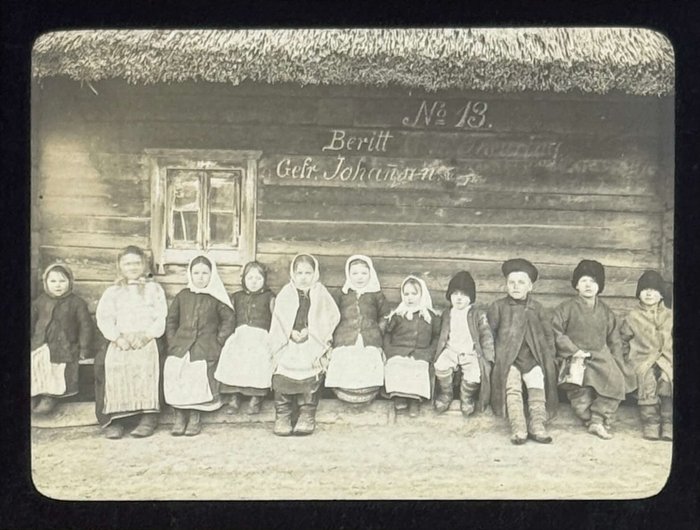
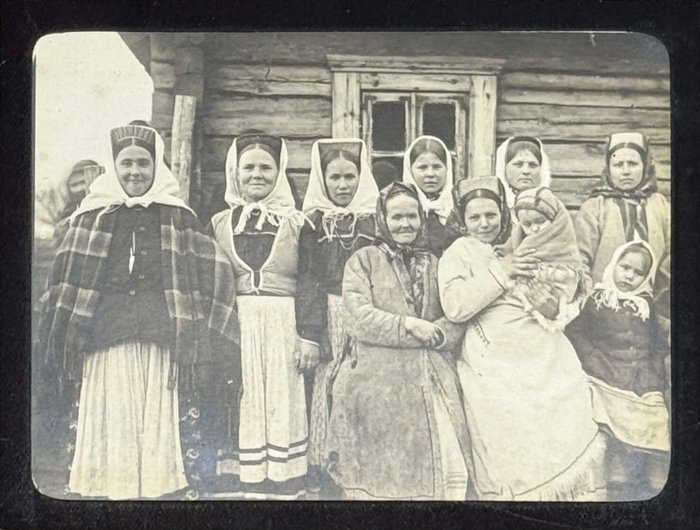
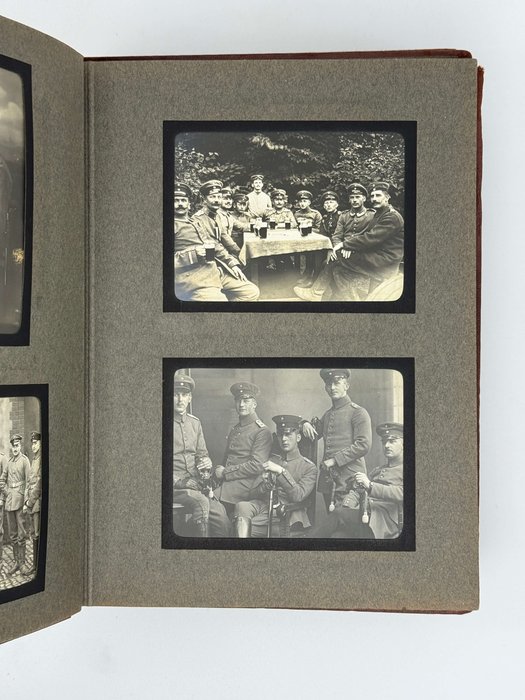
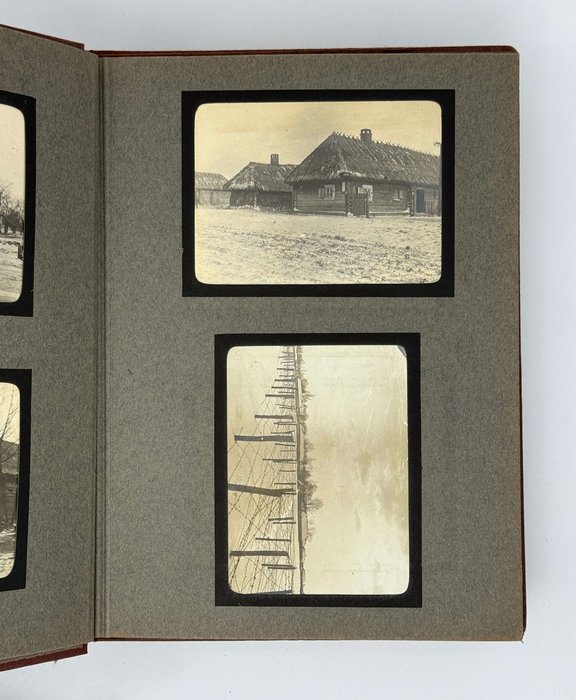
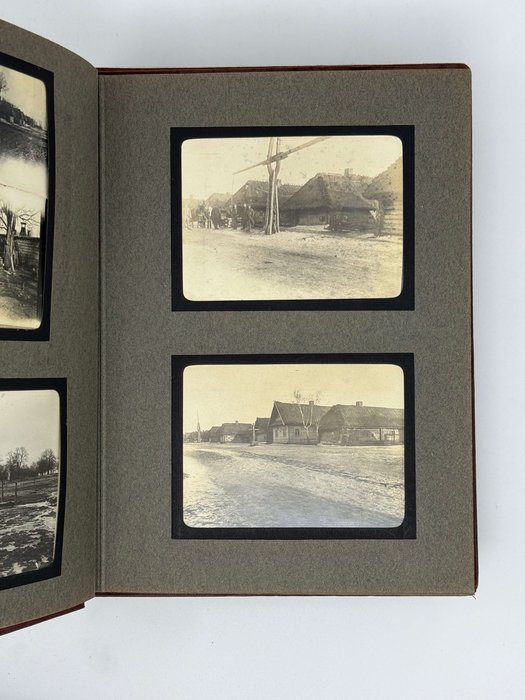
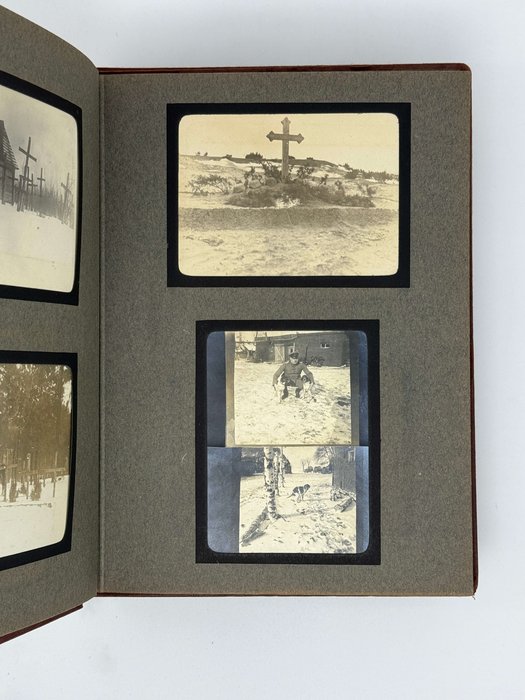
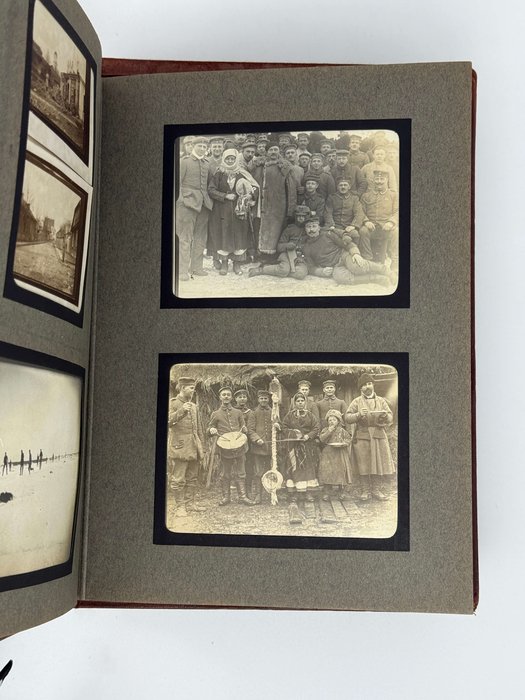
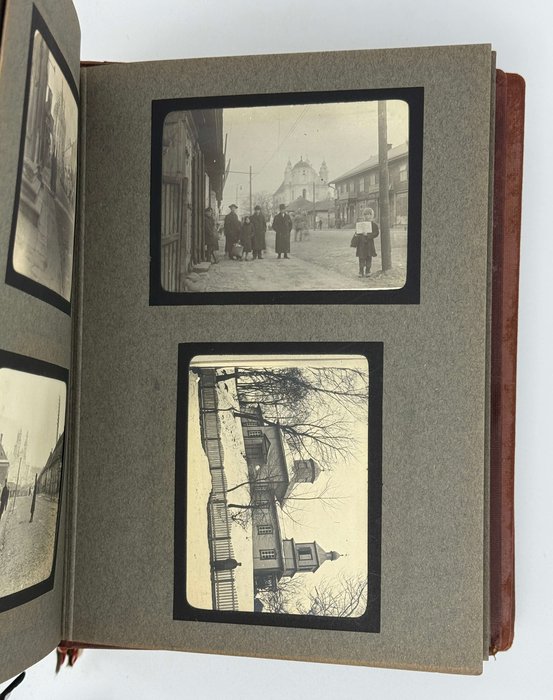
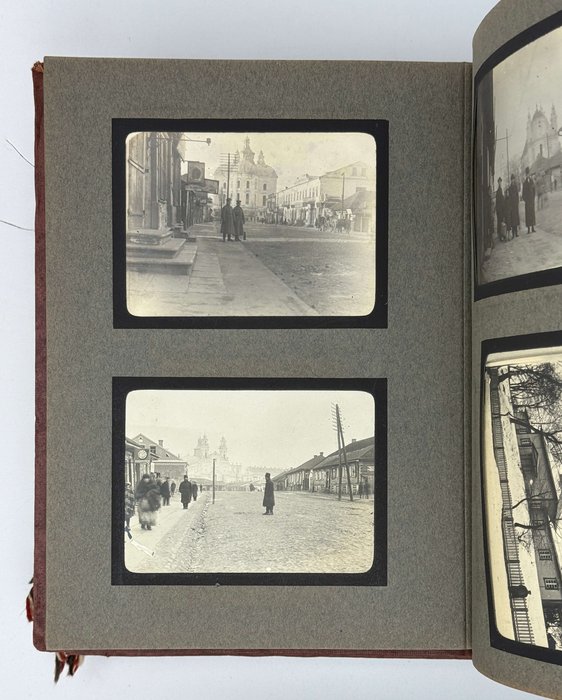
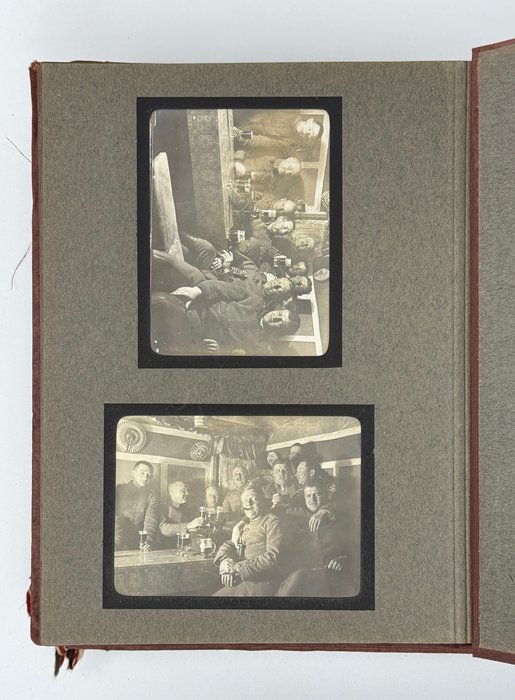

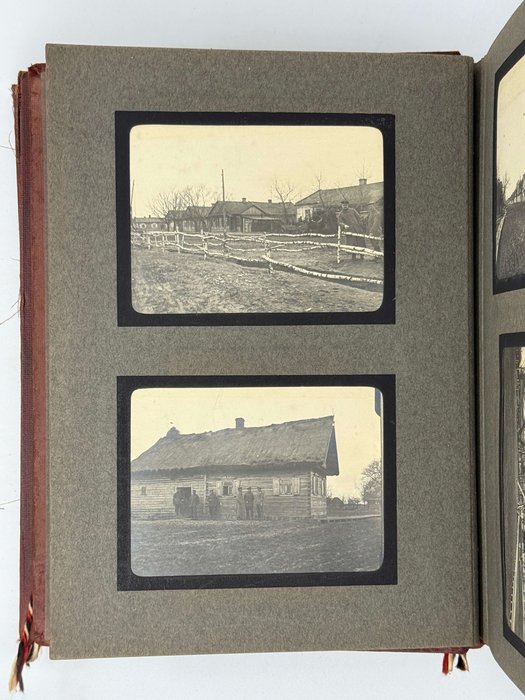
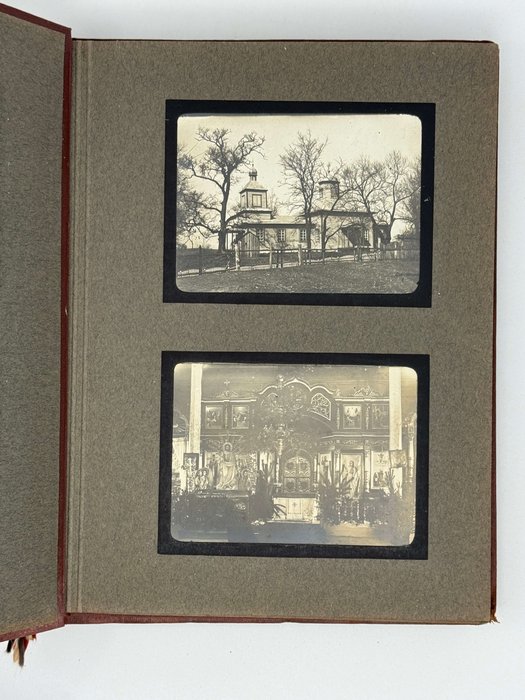
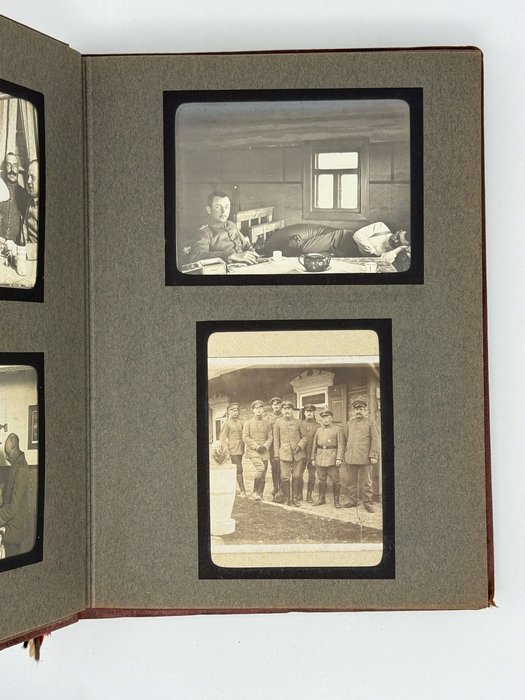
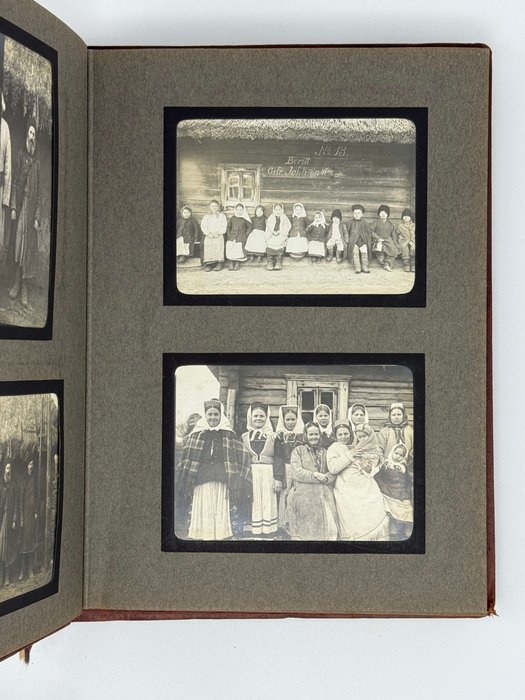
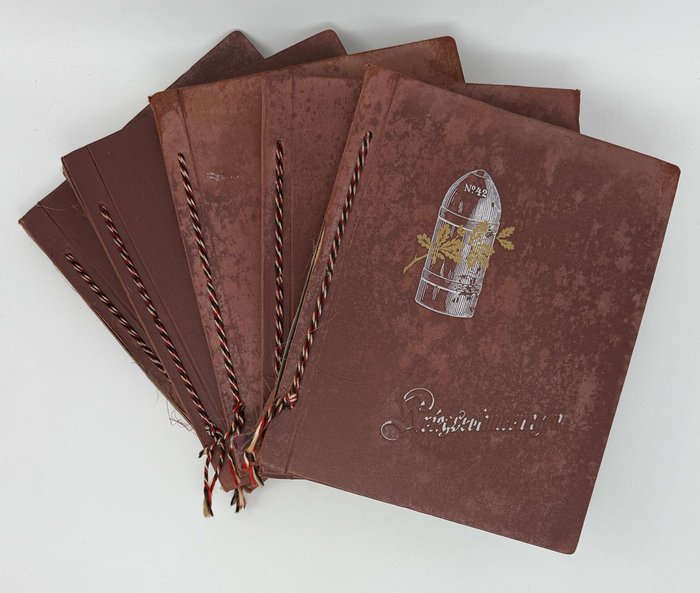
#PE49
Ca. October 1914 – 1916
Five Quarto albums, all ca. 26,5x21 cm (10 ¼ x 8 ¼ in). Each with 12 card stock leaves. With 51, 53, 49, 49, 52 [=254] mounted original gelatin silver photos (several are real photo postcards), mostly from ca. 8,5x14 cm (3 ¼ x 5 ¼ in) to ca. 9x12 cm (3 ½ x 4 ¾ in); over thirty photos are ca. 6x9 cm (2 ¼ x 3 ½ in) or slightly smaller. Over 90 photos with period pencil captions in German on verso; many also dated on verso; several real photo postcards with ink stamps, notes and addresses on verso. Five period reddish-brown cloth albums fastened with strings; front boards of all albums with colour-stamped vignettes and titles “Kriegserinnerungen.” Bindings rubbed on extremities, boards faded and partly discoloured, spines with minor splits or tears on hinges, some photos mildly faded, but overall a very good collection of strong interesting photos.
Historically significant extensive collection of over 250 original gelatin silver photos, documenting the WW1 service of a young German officer, with over 200 vivid images of the events on the Eastern Front in 1916, showing German occupation of modern-day Western Belarus (Pinks, the villages of Domaschizy/Domashitsy, Stawok/Stavok, Possenitchi/Posenichi, Bol. Dikowitchy/Bolshie Dikovichi, and others). The albums were compiled by a Münster resident, Heinz Laerberg, who started the war as an officer in the 13th machine gun company (Machinengewehr-Kompanie 13) of the VII Corps.
The first album, with 51 photos, covers the compiler’s service in northern France in December 1914 – August 1915. The first three photos show young graduates of a German military school in October 1914. The graduates hold a sign “M.G.K. 13 VII A.C. 5 Abteilung [Machinengewehr-Kompanie 13, VII. Armee-Korps, 5 Abteilung]” on one photo; two other images have the names of most of the portrayed people identified on verso, including the compiler (“Laerberg”). The photos from Northern France start with a group portrait of German officers and soldiers posing next to their quarters in Chermizy-Ailles, Aisne department (December 1914). Other images include a series of group portraits of German officers and soldiers posing next to their kaserneshof [barracks] (dated “16/2 15”), in front of a memorial cross, erected “on the first day of Christmas,” with machine guns, drinking beer (dated “1/7 15”), riding horses, during a leave in Berlin (dated “28/2 15”), &c. Many officers are identified on verso, including the compiler. One of the photos, dated “24/5 15” names him “off. Stellr.” (Offiziersstellvertreter or Officer Deputy). A series of photos show the front line and Schützengraben [trenches] near Arras (Pas-de-Calais department) in the summer of 1915. Several photos printed as real photo postcards contain letters and postal stamps to the compiler’s brother, “Herrn Leutnant d. Res. Carl Laerberg,” who served in the 5th Bavarian Reserve Division (5. Bayerische Reserve-Division).
The other four albums, with just over 200 photos, document the compiler’s service in the occupied territories of the Minsk Governorate of the Russian Empire (modern-day Republic of Belarus) in the winter-spring of 1916. The images focus on the city of Pinsk and nearby villages. After the German occupation and the end of WW1, this area was a part of the short-lived Belarusian People’s Republic and Ukrainian People’s Republic, then of the Second Republic of Poland in 1920 and was annexed by the Soviet Union in 1939.
The photos of Pinsk show the Pina River harbour and wharves, a casino for German officers and several city streets featuring the Catholic Cathedral of St. Stanislaw (demolished in 1953). The images of nearby villages include views of Domaschizy/Domashitsy (streets and traditional thatched-roof houses, local school, Russian cemetery, German trenches west of the village, a fire of the quarters of the “6th company” in February 1916, Russian prisoners-of-war), Stawok/Stavok (exterior and interior of the Ascension Orthodox church, a wheat mill, German quarters), Possenitchi/Posenichi, Bol. Dikowitchy/Bolshie Dikovichi, “Sumpf[…?] in Russland bei Pinsk,” several views of ruined buildings and destroyed bridges, &c.
Most photos are portraits and scenes illustrating military service and the everyday life of German officers and soldiers in Western Belarus. The images show staff quarters of various German companies (several with waving German Imperial flags), barbed wire fences on the front line, regimental horse-driven carts with supplies, a performance by the military orchestra, German soldiers and officers during military reviews, firing artillery and machine guns at the front line, in field tent camps, installing machine guns at a railway track (“21.3.16. ”), posing in trenches (in summer and winter), next to dugout shelters, at the graves of German soldiers, waiting in line at a field kitchen, inside their quarters (including inside a peasant house with a traditional brick stove), with local peasants, reading newspapers, drinking alcohol, playing soccer or cards, with the company’s dogs or spring chickens, &c. One of the photos showing a German officer was taken in the nearby town of Iwanowo [Ivanava] on 18.9.15, shortly after its occupation. There is also an interesting scene taken in Stawok, with German soldiers in fancy dress costumes, one of them holding a sign reading “Grosses Bauern-Teater tegl. Grosse-Gala-Vorstig” [Great Bavarian Theatre. Great Gala Performance].
The albums also contain a number of scenes and portraits of Belarusian peasants - elders, women wearing traditional costumes and headdresses (several names captioned on verso), families with children, views of the interior of peasants’ houses (with a woman spinning, a man weaving at a wooden machine, a family eating next to the traditional corner with Orthodox icons), &c.
Overall an extensive, historically significant collection of original snapshot photos, documenting the military service of a German machine gun company in modern-day Belarus and France during the first half of WW1.


































